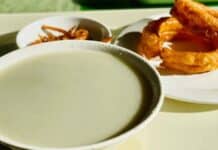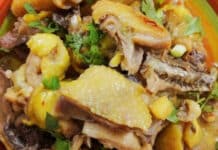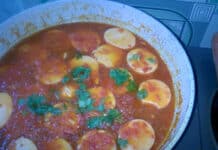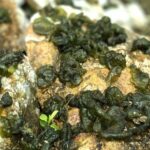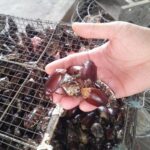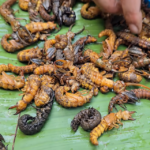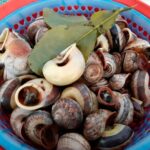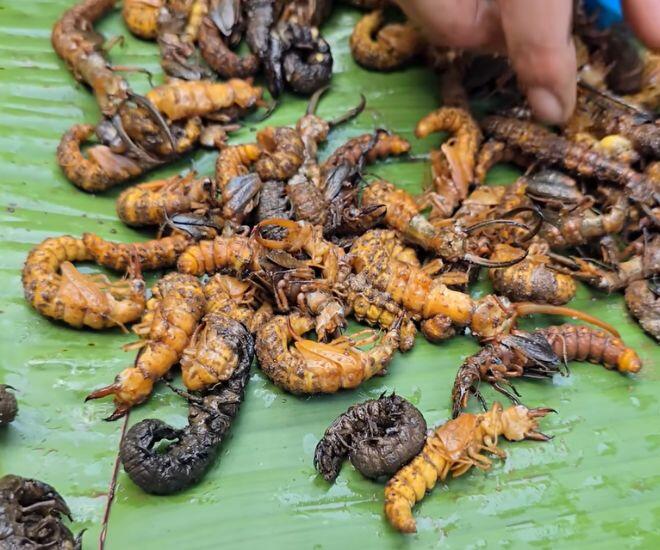
For the Thai people in Muong So, Phong Tho, Lai Chau, stone worms are known by a more poetic name: “dreams”. This delicacy is not just a simple dish but also carries profound spiritual beliefs. Locals believe that consuming stone worms will make their wishes come true. Thus, stone worms are not only a specialty but also an integral part of the Thai people’s culture and spirit.
Stone worms, also known as water worms or water centipedes, resemble common worms and larvae in appearance, but they lack an outer hairy layer. They make their homes in creek beds and among the rocks in rushing streams. Stone worms thrive in areas with numerous rocks close together and strong currents. However, instead of swimming freely, they cling tightly to the rock surfaces, becoming an inseparable part of the stream’s ecosystem.
Hunting stone worms requires finesse and dexterity. They are most abundant during the dry season, especially from the first to the fourth lunar month, when the summer rains begin to fall and the creek levels drop. Locals carefully turn over rocks along the creek bed in search of these creatures. Sometimes, they have to keep a sharp eye out as the young black stone worms can be hard to spot against the dark rocks. Mature stone worms, on the other hand, have a yellowish hue and possess long, sharp horns, dozens of pairs of legs, and a pointed tail resembling a centipede. Therefore, caution is necessary when handling them as the larger ones can inflict painful bites.
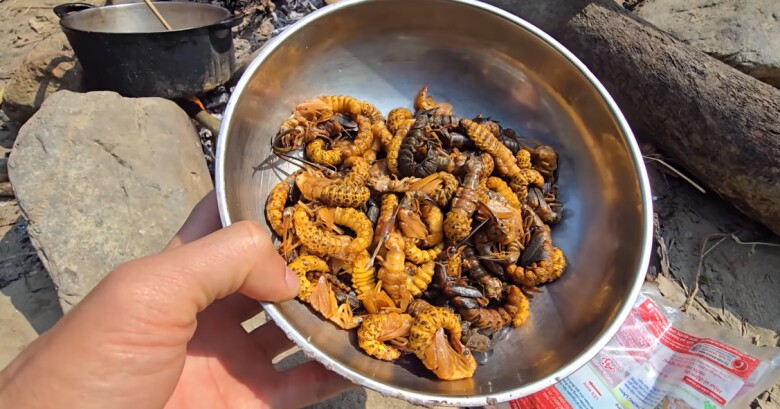
Despite their intimidating appearance, the preparation and cooking of stone worms are intricate and meticulous processes, transforming them into delectable dishes that tantalize the senses. After being caught, stone worms are soaked in salted water for 15-20 minutes to remove the slimy outer coating. Depending on regional preferences, the heads may be removed, the bellies slit open to remove the intestines, or they may be left intact. According to experienced Thai women, stone worms feed on algae and small water bugs, ensuring they are clean and easy to prepare.
To create the signature flavorful dish of fried stone worms, marination is a crucial step. After cleaning, the worms are seasoned with familiar spices such as fish sauce, salt, MSG, makhen (a typical spice of the Northwest), chili, and minced garlic. After marinating for about 10 minutes to allow the flavors to penetrate, the worms are fried with pork fat over low heat, stirring continuously. The pork fat not only adds a savory touch but also enhances the dish’s alluring aroma. When the stone worms start to curl, they are perfectly cooked.
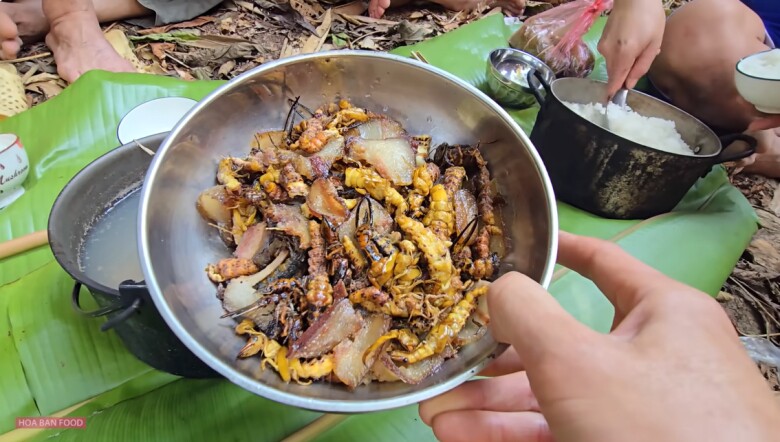
The most popular and beloved preparation of stone worms is frying them to a crisp. This dish captivates the palate with its crunchy exterior and sweet, buttery meat inside. Notably, the Thai people in Muong So have a unique and refined cooking method: they stuff the stone worms with minced bống fish or even whole small bống fish before frying. This combination yields a complex and irresistible flavor profile. The crispiness of the fried stone worm shell melds with the soft sweetness of the fish, offering a memorable culinary experience.
The pinnacle of this dish’s flavor, however, lies in the special dipping sauce: fermented tofu. This sauce is crafted with patience and care. Fresh tofu is sun-dried for half a day to harden the outer layer, then placed in a jar with star anise, chili, seasoning powder, and MSG, and left to ferment for about two weeks. When the tofu reaches the perfect level of fermentation, it is used as a dipping sauce for the fried stone worms, creating a harmonious blend of fatty, buttery, spicy, and aromatic flavors.
Beyond the traditional preparation of the Thai people in Muong So, stone worms are also creatively adapted in other regions. In some places, locals fry the stone worms and then season them with a bit of sour bamboo shoots and chopped lemon leaves, adding a refreshing sour and fragrant touch to the dish. Although a Thai specialty, stone worm dishes have gained popularity among lowland diners and are even favored by the Hani and Red Dao ethnic groups in certain areas. Many diners who have tried stone worms comment that despite their frightening appearance, the dish offers a unique flavor profile with a crunchy exterior and soft, buttery interior, reminiscent of silkworms or bamboo worms.
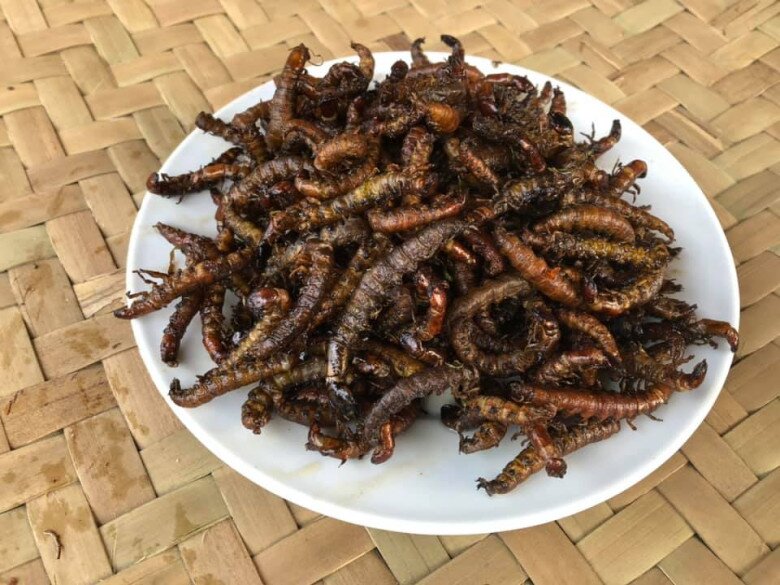
In the chilly weather of the Northwestern mountains, there’s nothing quite like gathering around a bonfire, savoring fried stone worms, and sipping on a cup of pungent corn wine. The rich flavors of the stone worms, combined with the wine’s spiciness, not only warm the body but also warm the soul. The more you eat and drink, the more you appreciate the beauty of this simple, honest, and unpretentious land and its people. Stone worms are not just a dish but a cultural experience, a connection between humans, nature, and traditional values.
However, stone worms have become rarer nowadays. Not everyone has the opportunity to indulge in this specialty. In fact, stone worms are now mostly served on special occasions or reserved for honored guests among the Thai community. This scarcity only adds to the value and appreciation of this unique delicacy.
While stone worms offer a delightful culinary experience, it is important to note that, like any other food, they can cause allergies or poisoning if not properly stored or prepared. Individuals with allergic tendencies should exercise caution and carefully consider their decision to indulge in this exotic treat.
3 Dishes That Will Make You Brave the North for a Taste
Although they may appear strange and unappetizing to some, stone crickets and shield bugs are considered delicacies in certain northern provinces of Vietnam. These insects are prepared in a variety of ways, including deep-frying, stir-frying, and simmering in tangy bamboo shoots, resulting in a unique and flavorful dining experience.
A Heavenly Delicacy: The Unique, Rainy-Season Treat That’s Taking the Culinary World by Storm
The Black Lady Mountain in Tay Ninh province is home to a unique delicacy – the mountain snails. These snails have a distinct palate, feasting on a variety of herbal delights that grow wild on the mountain slopes. Their menu includes the likes of herbal plants such as ma tien, la vong nui, and la Nang Hai.












